The other day I returned to Painter Street to pick up my finished pieces (which turned out great!) On the way, my taxi drove past something that piqued my interest so I returned today to investigate. It turned out to be the tomb of a Ming Dynasty official, replete with a stone gate and statue-lined spirit path leading up to the burial site. Even more remarkable was the large white cross in front of the tomb signifying that this important man was Roman Catholic. This type of memorial is incredibly rare and I could hardly believe my eyes!
The tomb belongs to Xu Guangqi, a 16th century agricultural scientist, mathematician, astronomer, military advisor and Cabinet member. Xu’s scientific work led to the revision of the Chinese calendar and advancements in farming, particularly rice production. He also translated Western classics into Chinese, including Euclid’s Elements, with the help of Italian Jesuit Matteo Ricci. In 1603 Xu Guangqi was baptized as Paul Xu and became known as one of the “Three Pillars of Chinese Christianity.”
The Xu Guangqi Memorial Hall stands near the tomb. Housed in a 15th century building known as Nanchunhua House, the small museum shares the history of Xu’s life and includes copies of some of his works.
Once a private cemetery, the burial site of Xu and his wife, their four grandsons and daughters-in-law, is located in what is now Guangqi park in Xujiahui district. Much of the land that comprises this district once made up the Xu family estate. Today the park is a quiet retreat where locals practice tai chi and play cards.
A few centuries later in 1905, French Jesuits built St. Ignatius Cathedral, Shanghai’s largest Catholic church, on land donated by Xu Guangxi’s ancestors. Once considered the “grandest cathedral in the far east,” St. Ignatius was ignominiously used as a grain warehouse during China’s Cultural Revolution. The imposing red brick spires were torn down during this time and rebuilt in 1980 after the cathedral was re-opened for its original purpose.
While not as ornate as the grand cathedrals of Europe, this majestic structure is filled with soaring Gothic arches and is large enough to hold around 2,500 worshipers. Separate masses are held in Chinese and English every weekend.
In 2002, Beijing artist Wo Ye was commissioned to replace the cathedral’s stained glass windows. The colorful results incorporate Chinese characters and imagery such as bamboo. The effect is magnificent!
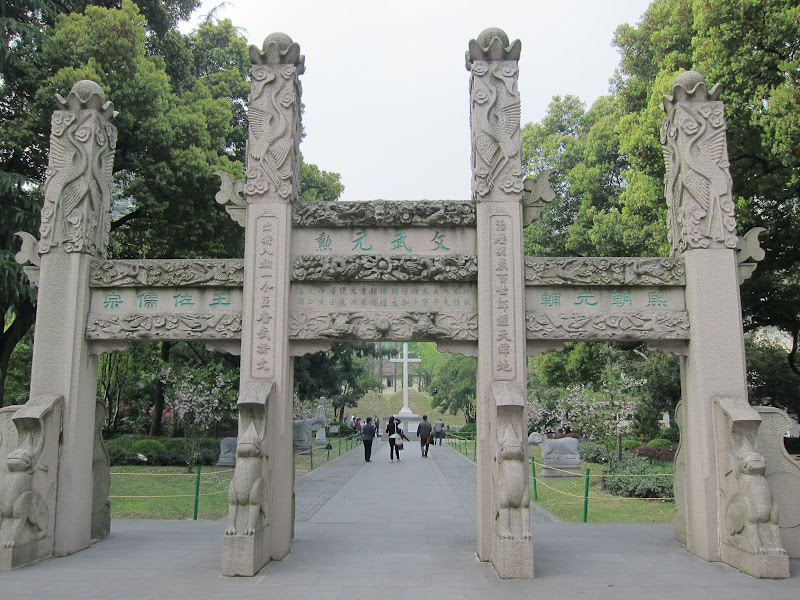
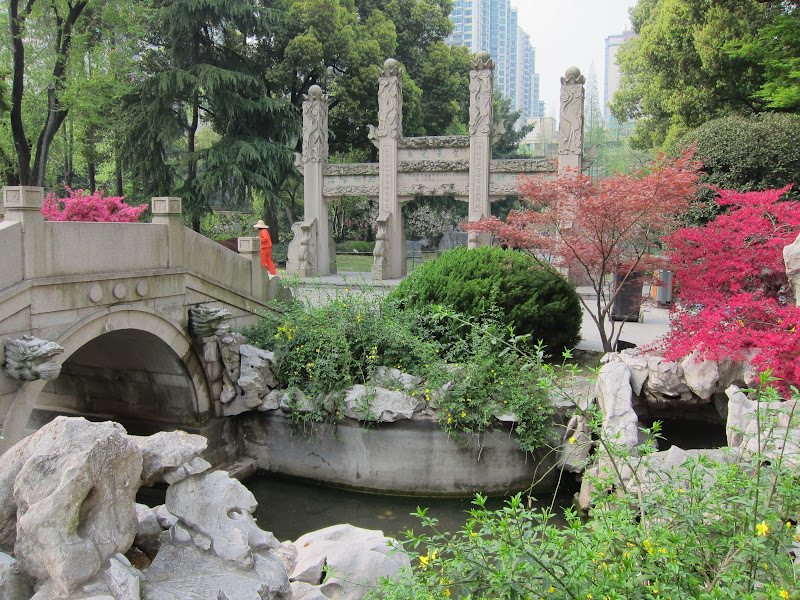
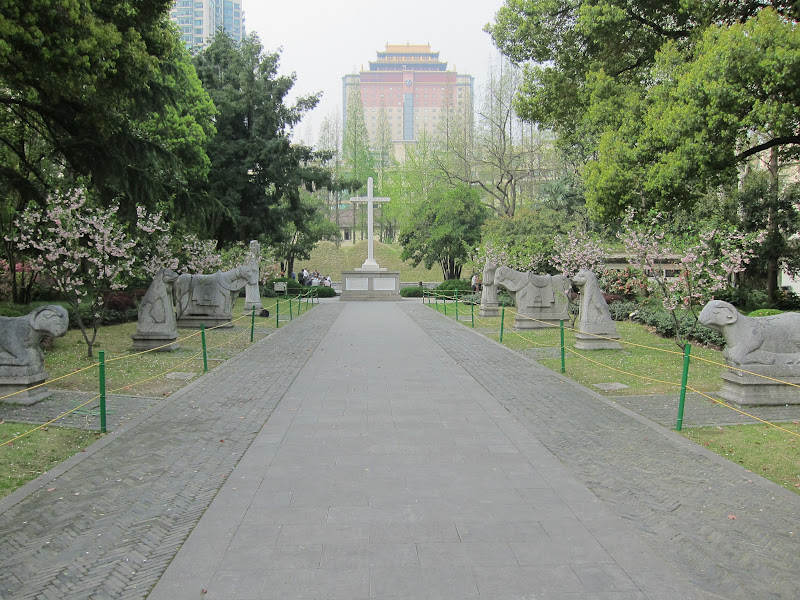
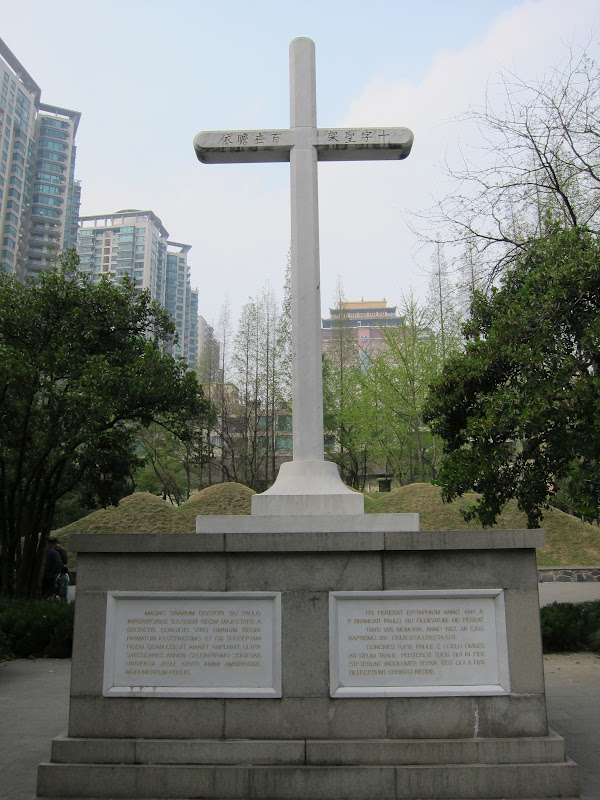
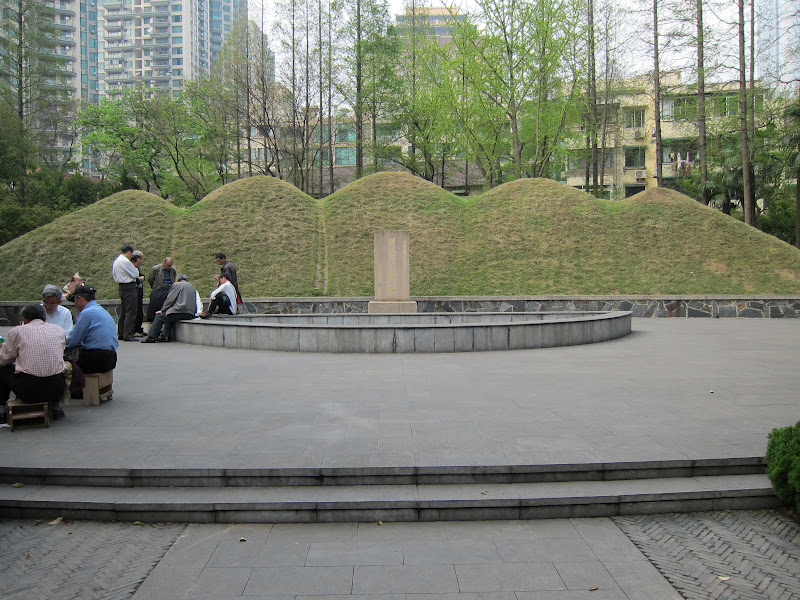
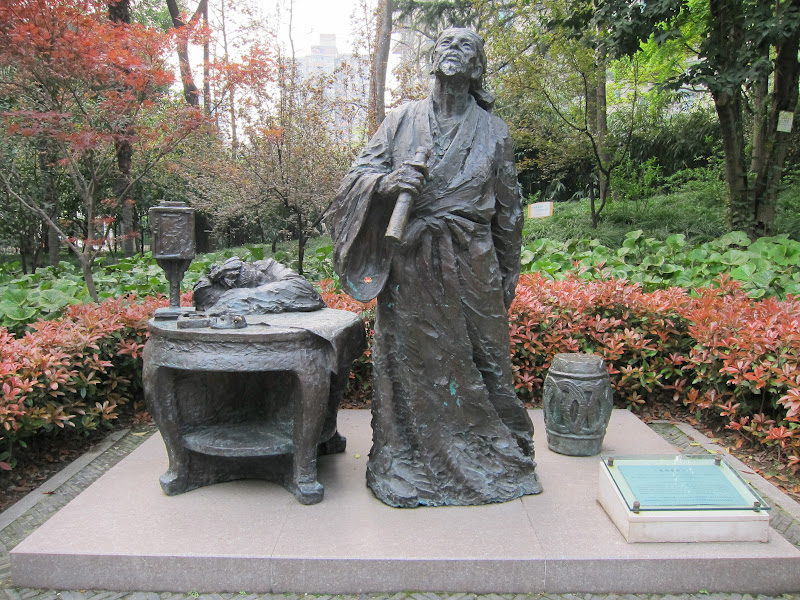
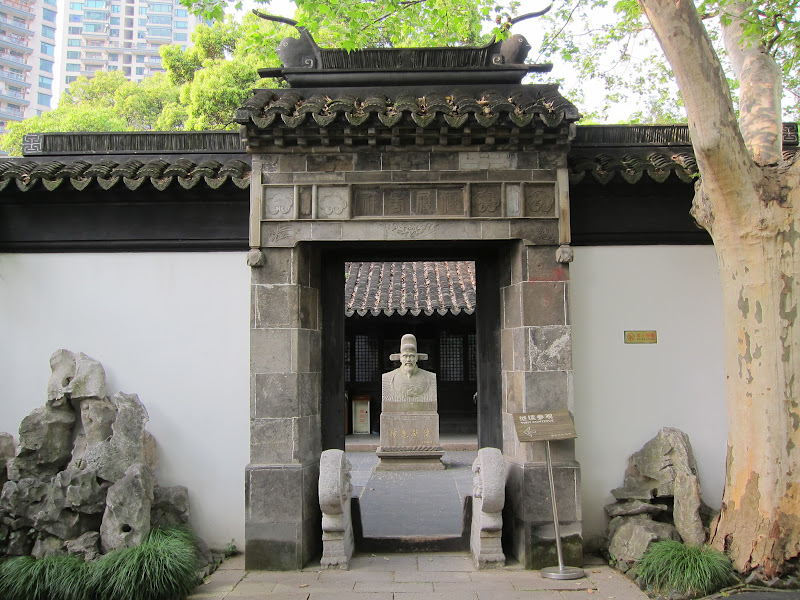
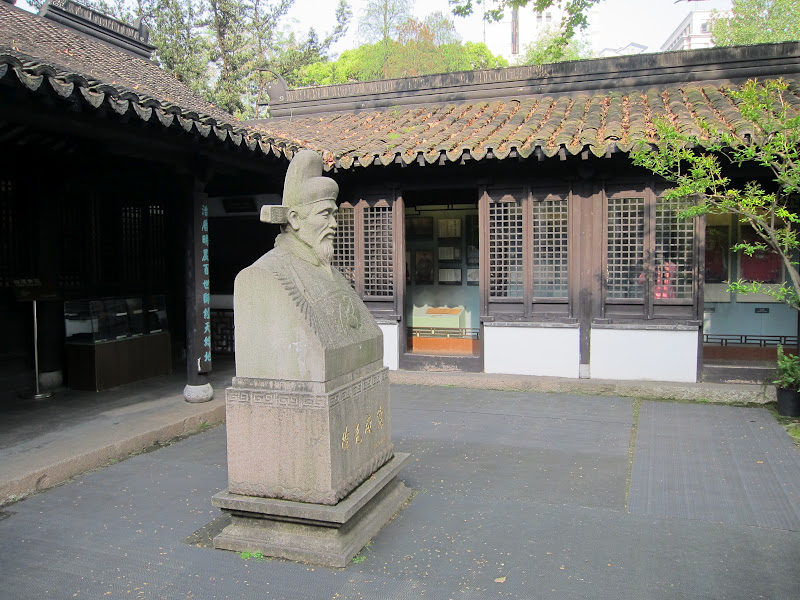
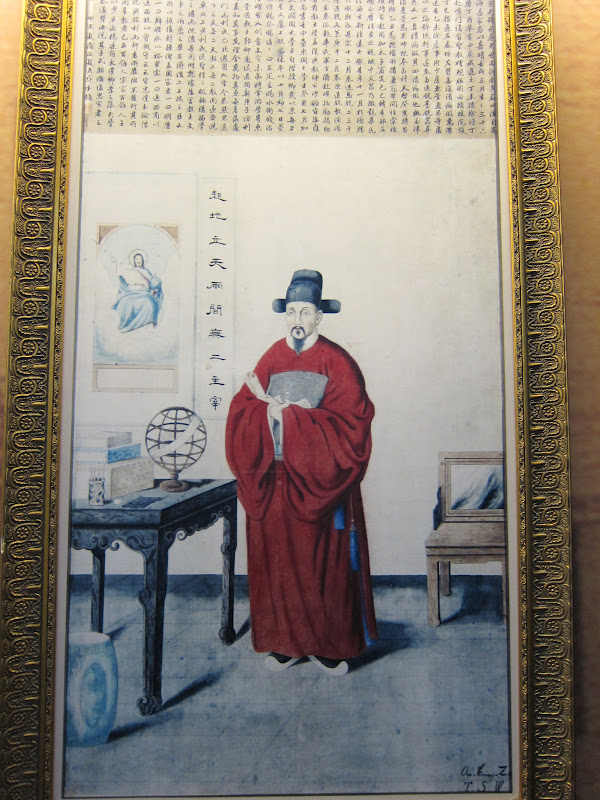
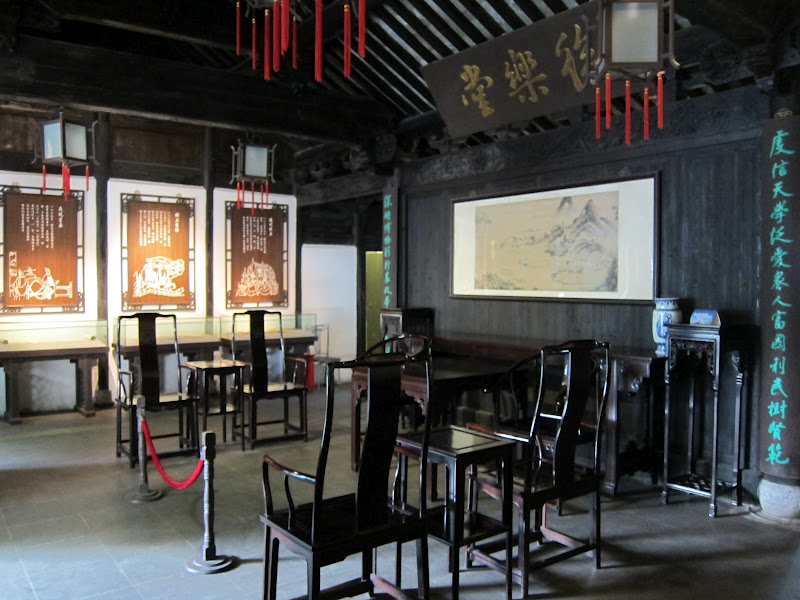
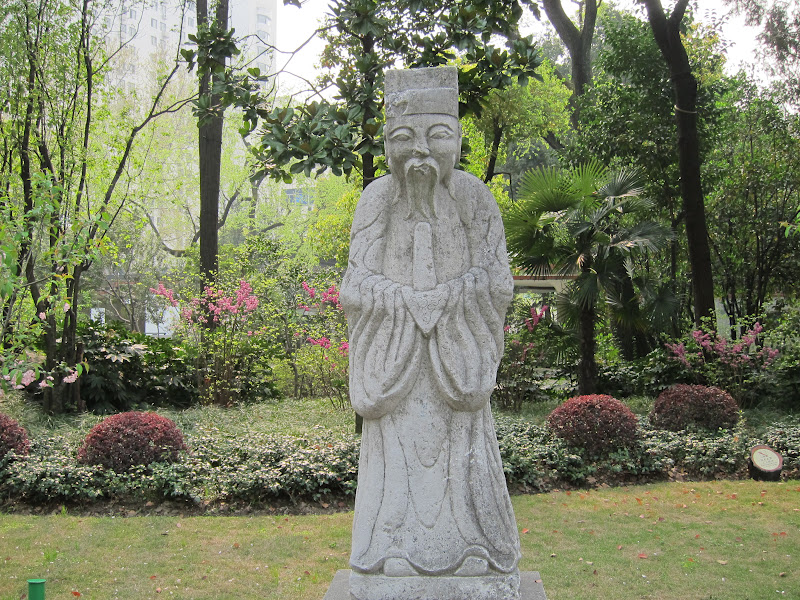
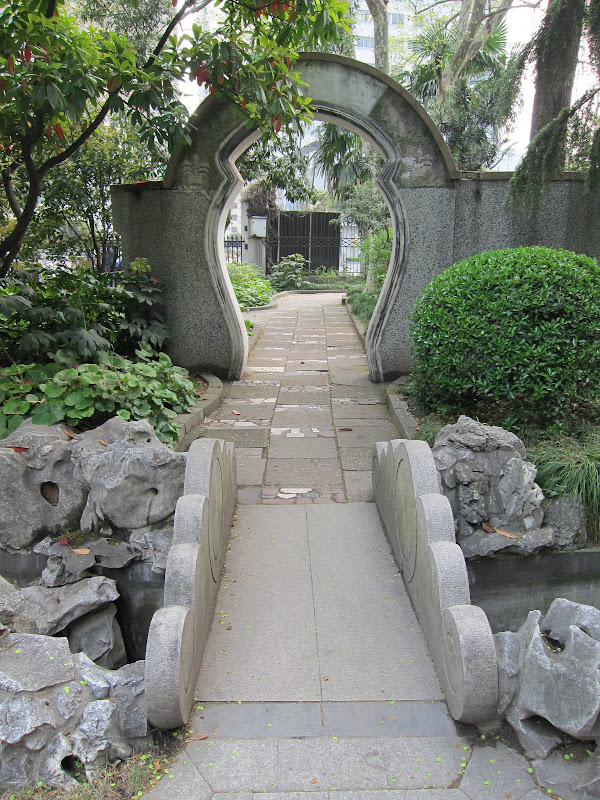
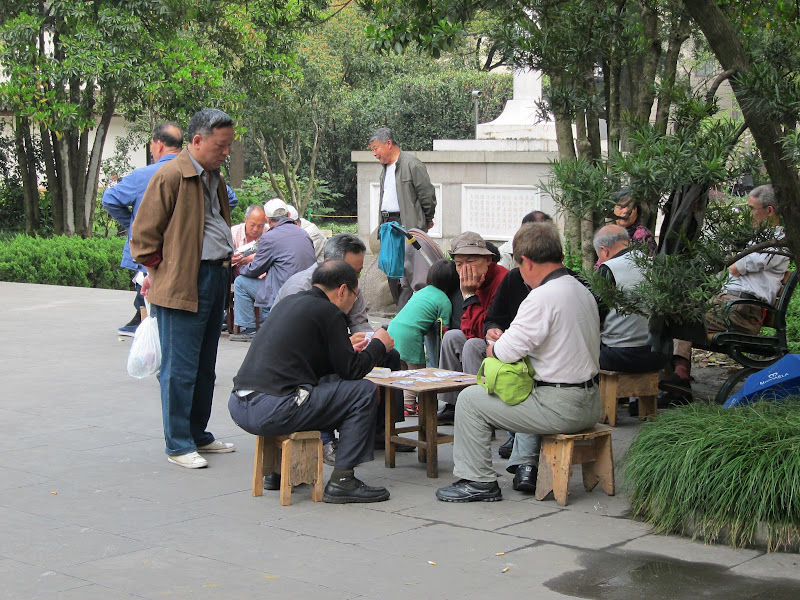









What a great find this was. Lovely little place. Mom
Very interesting! I love finding things like this! 🙂 Great pictures too!